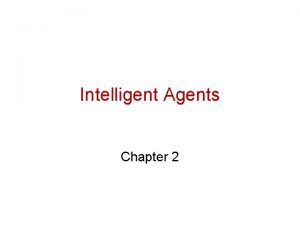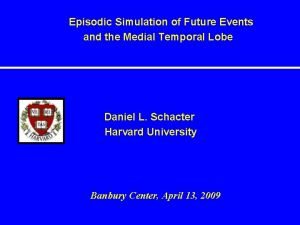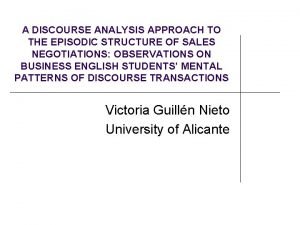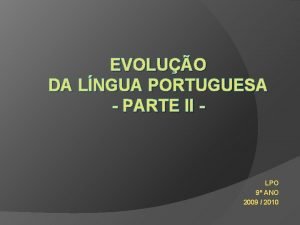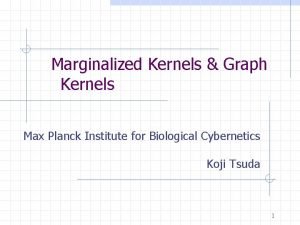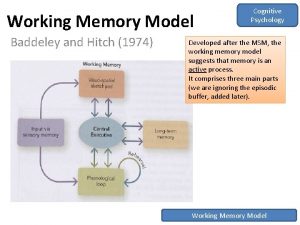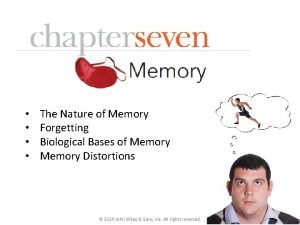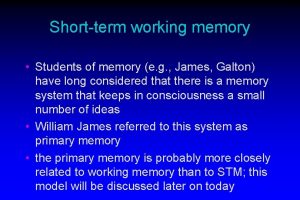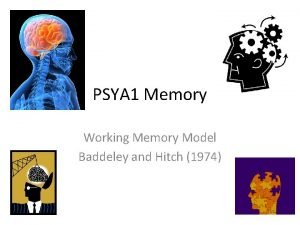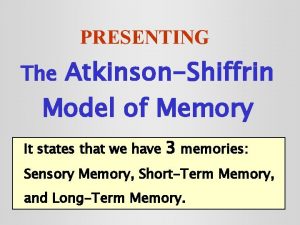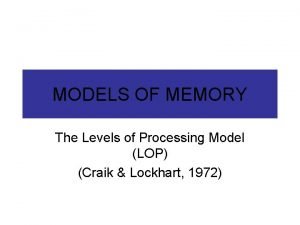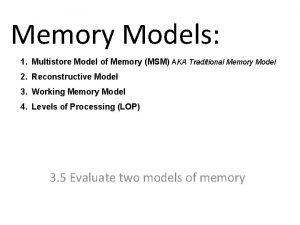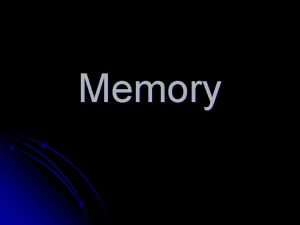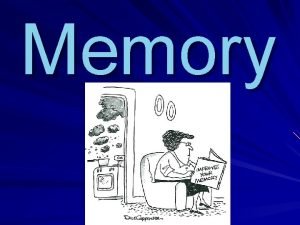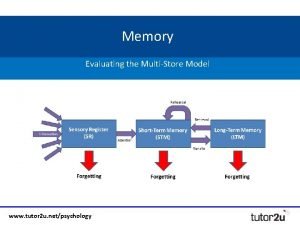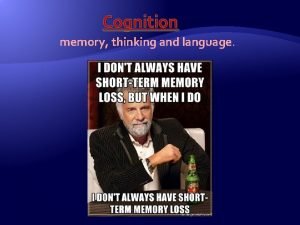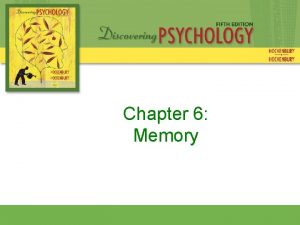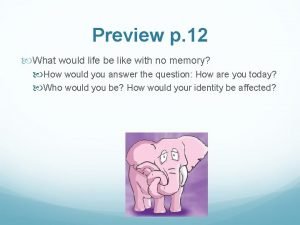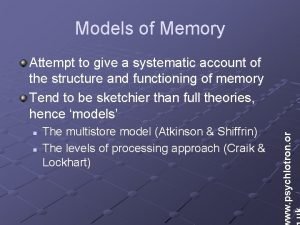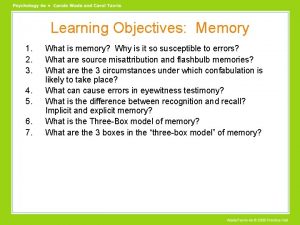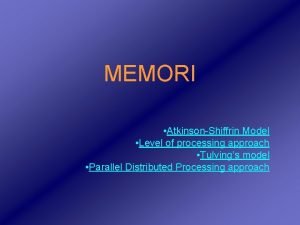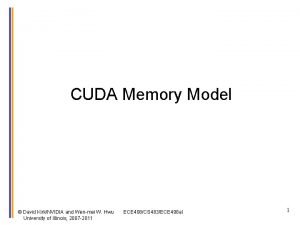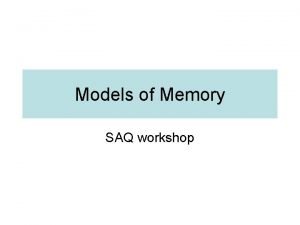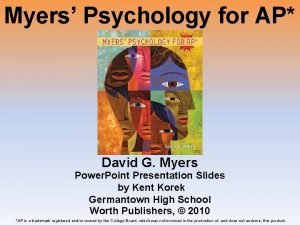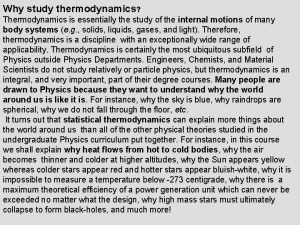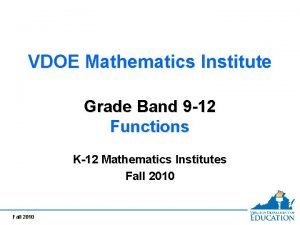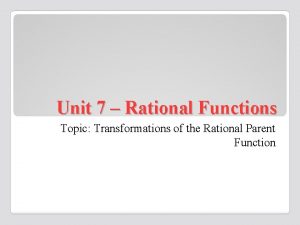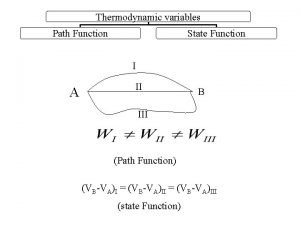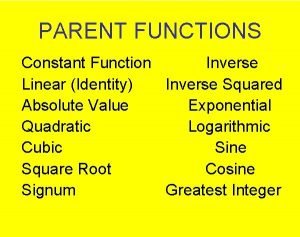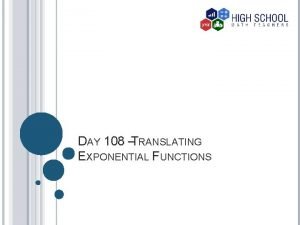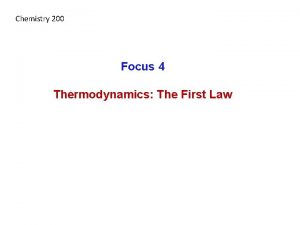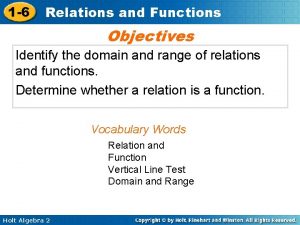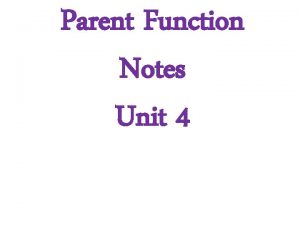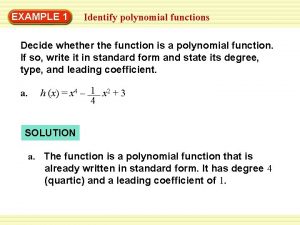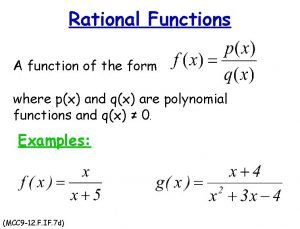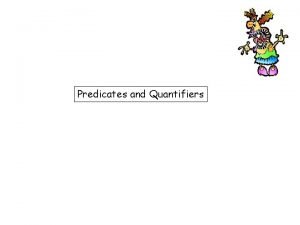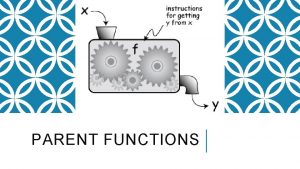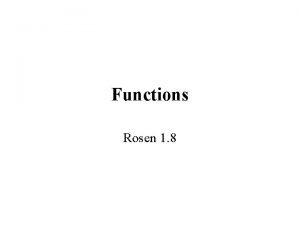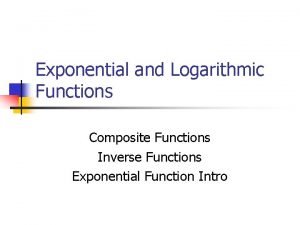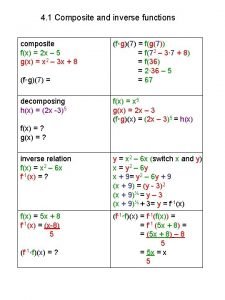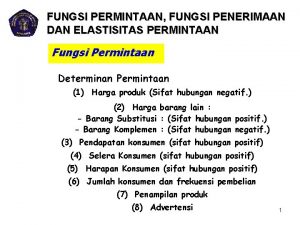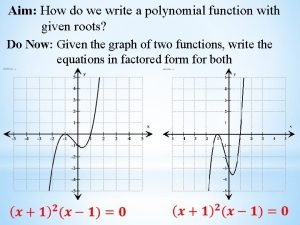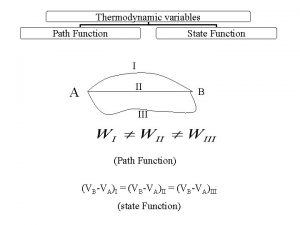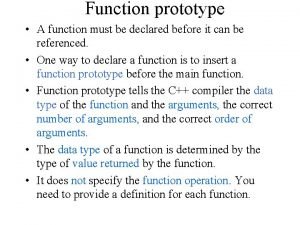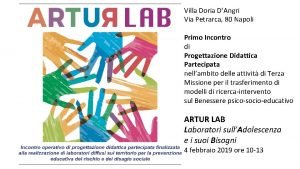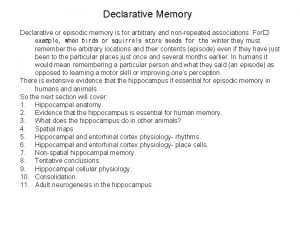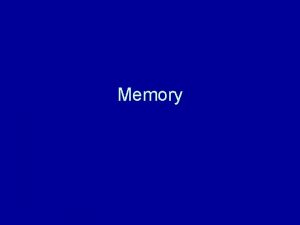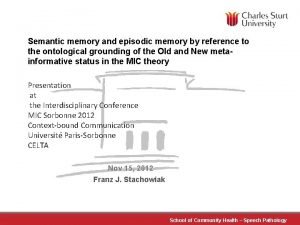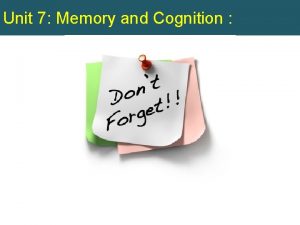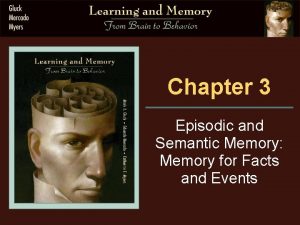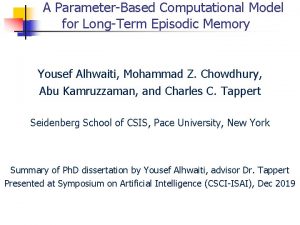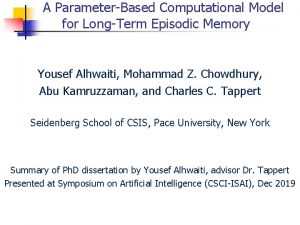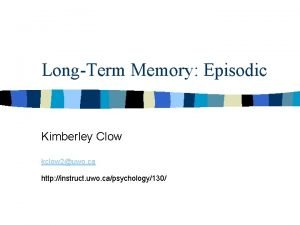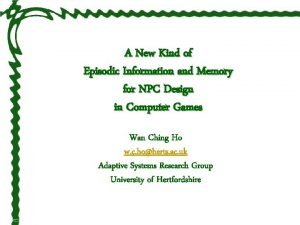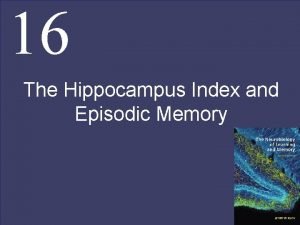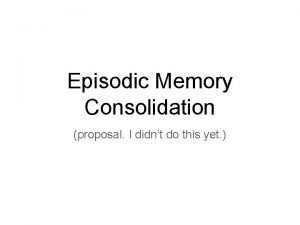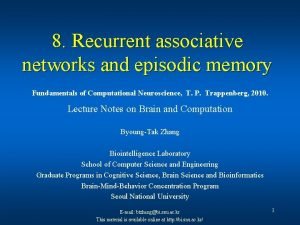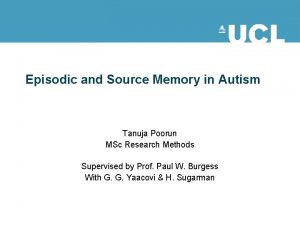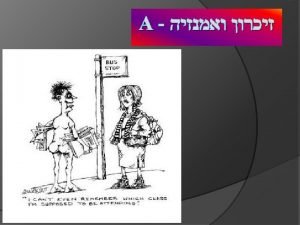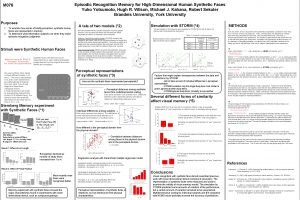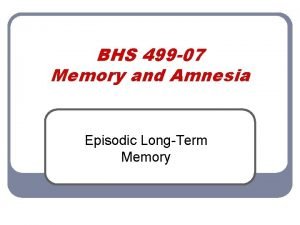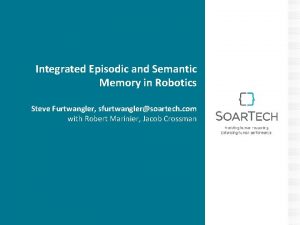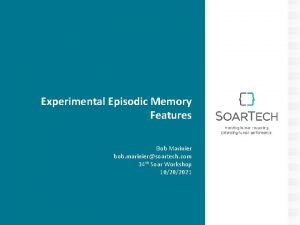A model of episodic memory function via corticohippocampal
















































![Memorization of F 2: [r 6 = f 16][r 8 = f 19] Existing Memorization of F 2: [r 6 = f 16][r 8 = f 19] Existing](https://slidetodoc.com/presentation_image_h/122b474ad46144c2dbedcc577f315265/image-49.jpg)






















- Slides: 71

A model of episodic memory function via corticohippocampal interactions and its implications for the understanding of consciousness Lokendra Shastri International Computer Science Institute Berkeley, CA Lokendra Shastri ICSI, Berkeley

Episodic Memory • Memories of events and situations in our daily lives – Who did what to whom where when and how • Memories of specific events acquired by • watching a newscast • reading a newspaper • participating in a dialog • … • Memories of overt thoughts and reflections • Prospective memories (+) Lokendra Shastri ICSI, Berkeley

Episodic Memory • Episodic memories enable us to recall our conscious experiences and place them within specific spatio-temporal contexts Lokendra Shastri ICSI, Berkeley

Episodic Memory Contrasts with other forms of “memories” • semantic knowledge – entities, categories – semantic facts (abstractions, statistical summaries) – “Common sense” knowledge (causal knowledge) • perceptual and motor skills (procedural knowledge) – riding a bicycle – playing the piano • priming Lokendra Shastri ICSI, Berkeley

Episodic and Semantic Memory: Some distinctions Acquired rapidly One-shot Acquired from multiple instances Specific events and situations (instances) Statistical summaries and generalizations acquired from several experiences Situated in specific spatio-temporal context include source information Typically, lack specific spatio-temporal context and source information Lokendra Shastri ICSI, Berkeley

Episodic and Semantic Memory: Some distinctions • Both episodic and semantic memories are responsive to partial cues (content addressable, support pattern completion) • But episodic memory has much higher specificity and sensitivity to mis-mismatches (support pattern separation) – episodic memory can store and differentiate several similar memories – response to a matching cue is clearly distinct from response to a near miss – but support reminding Lokendra Shastri ICSI, Berkeley

The hippocampal system plays a critical role in episodic memory function • lesion studies • imaging studies • Neuropathology of Alzheimer’s disease Lokendra Shastri ICSI, Berkeley

Impact of bilateral hippocampal lesion • Inability to form new episodic memories (anterograde amnesia) • Loss of episodic memories spanning several decades prior to the insult (retrograde amnesia) • Pre-morbid semantic memories spared • Some new semantic memories are acquired, but with significant difficulty • Procedural (e. g. , sensorimotor) memory spared • Priming and familiarity-based object recognition intact • No direct impact on the ability to understand produce language (but, lack of content and context…) Lokendra Shastri ICSI, Berkeley

An overview of cortico-hippocampal interactions HS ? + presentation of an event to HS HF response of HS presentation of a query to HS EC DG, CA 3, CA 2 CA 1 and Sub ? + response of HS to query High-level cortical circuits (HLCCs) HLCC Lokendra Shastri Subcortical regions including the amygdala, septum, and the brain stem ? significance of ongoing experience? ICSI, Berkeley

Hippocampal System Architecture HS PHC Higher order sensory and polysensory association areas including PFC 8 mil 17, 000 DG 15 mil 14 CA 3 2. 7 mil CA 2 PER EC Sub 4. 5 mil CA 1 15 mil HLCCs Subcortical regions including amygdala, septum, and the brain stem Lokendra Shastri ICSI, Berkeley

Hippocampal System • Different types of inhibitory interneurons • Specific sorts of local circuits formed by principal cells and inhibitory interneurons • Occurrence of rhythmic activity in gamma and theta bands • Synaptic plasticity along all key pathways Lokendra Shastri ICSI, Berkeley

Cortico-hippocampal interactions • How are events and situations (episodes) expressed as transient patterns of activity in high-level cortical circuits? • How is an episode encoded as a memory trace in the HS? (feature vector, conjunctive code, relational structure, auto-associative memory, …) • How is this trace laid down rapidly? Lokendra Shastri ICSI, Berkeley

SMRITI* – a model of episodic memory • Examined the architecture, local circuitry, and plasticity of the HS • Analyzed the functional requirements of encoding episodes • Identified a neural circuit that satisfies the requirements of encoding episodes • Demonstrated that this circuit can be learned rapidly and automatically by the HS in response to cortical activity • Analyzed the model to explain and predict properties of episodic memory *System for memorizing relational instances from transient impulses S Lokendra Shastri m r i t i ICSI, Berkeley

Events and Situations Are Relational Instances “John gave Mary a book in the library on Tuesday” Mary giver: John recipient: Mary give-object: a-book location: library temporal-loc: Tuesday library give John a-book Lokendra Shastri Tuesday ICSI, Berkeley

Events and Situations Are Relational Instances “John gave Mary a book in the library on Tuesday” Mary giver: John recipient: Mary give-object: a-book location: library temporal-loc: Tuesday library give John a-book Lokendra Shastri Tuesday ICSI, Berkeley

Events and Situations Are Relational Instances “John gave Mary a book in the library on Tuesday” Mary giver: John recipient: Mary give-object: a-book location: library temporal-loc: Tuesday library give John a-book Lokendra Shastri Tuesday ICSI, Berkeley

Events and Situations Are Relational Instances “John gave Mary a book in the library on Tuesday” giver: John recipient: Mary give-object: a-book location: library temporal-loc: Tuesday Mary John give e-27 a-book Lokendra Shastri library Tuesday ICSI, Berkeley

Events and Situations Are Relational Instances “John gave Mary a book in the library on Tuesday” recipient Mary library giver location John give-object Lokendra Shastri e-27 a-book temporal-loc Tuesday ICSI, Berkeley

The twin requirements: • Responsiveness to partial cues • High specificity (pattern separation) => An event’s episodic memory trace must be sensitive to binding mismatches – Memorized event: (<r 1=a>, <r 2=b>) Partial Cue: (<r 1=a>) Erroneous Cue: (<r 1=a>, <r 2=c>) Lokendra Shastri ICSI, Berkeley

Episodic memory trace An event’s episodic memory trace must contain functional elements for • memorizing role-entity bindings and detecting a match between the memorized bindings and those specified in a cue (binding-match detectors) • detecting a mismatch between the memorized bindings and those specified in a cue (binding-error detectors) • detecting a match between a cue and the memorized event based on the responses of the above detectors (relational-match indicators) • reinstating bindings of the memorized event in HLCCs in response to a matching cue (binding-reinstators) Lokendra Shastri ICSI, Berkeley

Retrieval: reinstatement of bindings • An event’s episodic memory trace becomes active if the cue (partially) matches the memorized event • The bindings encoded by the activated memory trace get reinstated within high-level cortical circuits (HLCCs) • These HLCCs encode semantic knowledge about entities, categories, and actions, and interact with perceptual and motor schemas • When activated with the appropriate bindings, the HLCCs reconstruct the retrieved event by a process akin to a mental simulation Lokendra Shastri ICSI, Berkeley

How are episodes expressed as a pattern of activity in HLCCs? Lokendra Shastri ICSI, Berkeley

Relational Schemas in HLCCs: Focal-Clusters Buy Lokendra Shastri + - ? buyer buy-obj ICSI, Berkeley

Focal-cluster of a Relational Schema Focal-cluster perceptual schemas associated with buy focal-clusters of other relational schemas causally related to buy Buy + - ? buyer buy-obj motor schemas associated with buy Lokendra Shastri episodic memories of buy events lexical knowledge associated with buy ICSI, Berkeley

Focal-clusters Cells in the buy focal-cluster become active when • perceiving a buy event • remembering a buy event • understanding a sentence about a buy event • experiencing a buy event (buying) A focal-cluster is like a “supra-mirror” cluster Lokendra Shastri ICSI, Berkeley

Focal-cluster of an Entity Perceptual schemas Associated with Tom + ? motor schemas associated with Tom Lokendra Shastri focal-clusters of other entities and categories semantically related to Tom episodic memories where Tom is one of the role-fillers focal-clusters of lexical knowledge associated with Tom ICSI, Berkeley

Focal-cluster of an Entity focal-clusters of other entities and categories semantically related to me Perceptual schemas Associated with me I / me + ? motor schemas associated with me Lokendra Shastri episodic memories where I am one of the role-fillers focal-clusters of lexical knowledge associated with me ICSI, Berkeley

“John fell in the hallway” Fall + -- ? fall-pat fall-loc +: Fall fall-loc Hallway fall-pat + ? +: Hallway + ? +: John Lokendra Shastri ICSI, Berkeley

“John slipped in the hallway” => “John fell in the hallway” Slip + - ? slip-pat slip-loc +: Fall fall-loc fall-pat mediator + ? r 1 r 2 +: slip-loc slip-pat Fall + - ? fall-pat fall-loc +: Hallway +: John Hallway + ? Lokendra Shastri John + ? ICSI, Berkeley

Massively Parallel Inference • Assuming -band activity underlies dynamic bindings Þ inferring “John may be hurt” from “John fell” takes only ~ 200 msecs. • Time required to perform inference is independent of the size of the causal model • Anytime property Lokendra Shastri ICSI, Berkeley

Predictions: constraints on reflexive inference • -band activity (~ 25 -60 Hz) underlies dynamic binding • jitter in synchronous firing ~ 3 msec Þ only ~ (40 ÷ 6) distinct phases can occur within ongoing rhythmic activity (cf. 7 2) cross-talk among entities increases as the number of phases approaches and exceeds 7 Lokendra Shastri ICSI, Berkeley

Predictions: constraints on “working memory” underlying reflexive reasoning 1. A large number of relational instances (facts) can be co-active, and numerous “rules” can fire in parallel, but 2. Only a small number of distinct entities can serve as role-fillers in this activity (7 2) 3. Only a small number of instances of the same predicate can be co-active at the same time 2 & 3 specify limits on working memory underlying RR Lokendra Shastri ICSI, Berkeley

“John fell in the hallway. Tom had cleaned it. He got hurt. ” Lokendra Shastri ICSI, Berkeley

Lokendra Shastri ICSI, Berkeley

Lokendra Shastri ICSI, Berkeley

The activation trace of +: slip and +: trip S 1 Lokendra Shastri S 2 S 3 ICSI, Berkeley

A Metaphor for Reasoning • An episode of reflexive reasoning is a transient propagation of rhythmic activity • Each entity involved in this reasoning episode is a phase in this rhythmic activity • Bindings are synchronous firings of cell clusters • Rules are interconnections between cell-clusters that support context-sensitive propagation of activity • Unification corresponds to merging of phases • A stable inference - explanation/answer - corresponds to reverberatory activity around closed loops – The results of the above become conscious Lokendra Shastri ICSI, Berkeley

+ - ? buyer buy-obj Buy HS Fido + ? Tom + ? High-level cortical circuits Lokendra Shastri ICSI, Berkeley

Activity-based encoding of a relational instance + - ? buyer buy-obj Buy HS Fido + ? Tom + ? High-level cortical circuits Lokendra Shastri ICSI, Berkeley

“ Tom bought Fido” +: buy-obj buyer +: Fido +: Tom Lokendra Shastri ICSI, Berkeley

from to +: Tom from ? : Buy from buyer from ? : Tom from ? : Fido +: Tom ? Buy buyer ? : Tom ? : Fido b-obj from to +: buy from to +: Fido HLCC EC +: Buy DG CA 3 CA 2 CA 1 Sub Linking cells Lokendra Shastri ICSI, Berkeley

from to +: Tom from ? : Buy from buyer from ? : Tom from ? : Fido +: Tom ? Buy buyer=Tom ? : Fido b-obj=Fido b-obj from to +: buy from to +: Fido HLCC EC DG Linking cells Bindingdetector cells Lokendra Shastri +: Buy CA 3 CA 2 CA 1 Sub ICSI, Berkeley

from to +: Tom from ? : Buy from buyer from ? : Tom from ? : Fido +: Tom ? Buy (buyer=Tom |E) buyer=Tom ? : Fido b-obj=Fido b-obj from to +: buy from to +: Fido HLCC EC DG CA 3 Linking cells Bindingdetector cells Binding-errordetector circuits Lokendra Shastri (b-obj=Fido |E) +: Buy CA 2 CA 1 Sub ICSI, Berkeley

from to +: Tom from ? : Buy from buyer from ? : Tom +: Tom ? Buy (buyer=Tom |E) buyer=Tom ? : Tom bei (E) from ? : Fido b-obj=Fido b-obj from to +: buy from to +: Fido HLCC EC DG Linking cells Bindingdetector cells Lokendra Shastri (b-obj=Fido |E) +: Buy CA 3 CA 2 CA 1 Sub Binding-error- Bindingerrordetector integrator circuits ICSI, Berkeley

from to +: Tom from ? : Buy from buyer from ? : Tom +: Tom ? Buy (buyer=Tom |E) buyer=Tom ? : Tom bei (E) remind(E) from ? : Fido b-obj=Fido b-obj from to +: buy from to +: Fido HLCC EC DG Linking cells Bindingdetector cells Lokendra Shastri (b-obj=Fido |E) +: Buy CA 3 CA 2 Binding-error- Bindingerrordetector integrator circuits CA 1 Sub Relationalmatch-indicator circuits ICSI, Berkeley

from to +: Tom from ? : Buy from buyer from ? : Tom +: Tom ? Buy (buyer=Tom |E) buyer =Tom|E buyer=Tom ? : Tom bei (E) remind(E) from ? : Fido b-obj=Fido b-obj from to +: buy from to +: Fido HLCC EC DG Linking cells Bindingdetector cells Lokendra Shastri b-obj of E=Fido|E (b-obj=Fido |E) +: Buy CA 3 CA 2 Binding-error- Bindingerrordetector integrator circuits CA 1 Relationalmatch-indicator circuits Sub Bindingreinstator cells ICSI, Berkeley

from to +: Tom from ? : Buy from buyer from ? : Tom +: Tom ? Buy (buyer=Tom |E) buyer =Tom|E buyer=Tom ? : Tom bei (E) remind(E) from ? : Fido b-obj=Fido b-obj from to +: buy from to +: Fido HLCC EC DG Linking cells Bindingdetector cells Lokendra Shastri b-obj of E=Fido|E (b-obj=Fido |E) +: Buy CA 3 CA 2 Binding-error- Bindingerrordetector integrator circuits CA 1 Relationalmatch-indicator circuits Sub Bindingreinstator cells ICSI, Berkeley

Long-term Potentiation (LTP) Long-term increase in synaptic strength resulting from the pairing of pre-synaptic activity with post-synaptic depolarization • rapidly induced, long lasting, synapse specific • LTP of a synapse requires the synchronous arrival of activity at multiple synapses of the post-synaptic cell (co -operativity) operativity – ideal for transforming a transient, activity-based expression of a relation between multiple items into a persistent, synaptic-efficacy-based structural encoding of the relation Lokendra Shastri ICSI, Berkeley
![Memorization of F 2 r 6 f 16r 8 f 19 Existing Memorization of F 2: [r 6 = f 16][r 8 = f 19] Existing](https://slidetodoc.com/presentation_image_h/122b474ad46144c2dbedcc577f315265/image-49.jpg)
Memorization of F 2: [r 6 = f 16][r 8 = f 19] Existing fact memorized in episodic memory: F 1: [r 6 = f 10] [r 8 = f 2] Notation: [role 1 = filler 1][role 2 = filler 2] e. g. , Existing fact: Novel fact: Lokendra Shastri “John invited Mary” “Susan invited Tom” ICSI, Berkeley

Some assumptions underlying quantitative analysis • Conceptual space – 16, 000 relations (chuck, throw, toss, lob …) – 50, 000 entities (serving as role-fillers) • Cell and synapse count in various HS regions are based on anatomical data, where available • Plausible physiological parameters governing LTP Lokendra Shastri ICSI, Berkeley

Functional Characteristics of Episodic Memory • Rapid, one-shot acquisition (~ 500 millisecond) • high capacity (~ 50, 000 episodes ) • responsiveness to partial cues (pattern completion) • high specificity (pattern separation) – response to a matching cue clearly distinct from response to a near miss – but support reminding • robust against mild cell loss Lokendra Shastri ICSI, Berkeley

Neural mass recruited for each memory trace “John gave Mary a book in the library on Tuesday” Statistic DG [bind] CA 3 [bed] CA 2 [bei] CA 1 [remind] Sub [reinstate] E<recruit> (s) 195. 0 (14. 0) 16. 0 (4. 0) 13. 2 (3. 6) 51. 4 (7. 2) 56. 0 (7. 5) • Probability of failure to encode a memory trace < 10 -18 • Sparse encoding, yet • Highly redundant • Copies of each functional unit are physically distributed Lokendra Shastri ICSI, Berkeley

Lokendra Shastri ICSI, Berkeley

Episodic Memory • Operates seamlessly with semantic memory and procedural knowledge • Serves as a basis for explanatory and predictive inferences episodic memory of having seen Tom walking a puppy in the morning enables one to • subsequently “explain” Tom buying dog food • respond “probably yes” to Does Tom own a pet? Lokendra Shastri ICSI, Berkeley

Buy + - ? buyer buy-obj <Tom bought Fido at the pet store on Friday> <…> <…> HLCCs Own HS + - ? owner own-obj Fido + ? +e +v ? v ? e Lokendra Shastri Dog + ? Tom ICSI, Berkeley

Buy + - ? buyer buy-obj <Tom bought Fido at the pet store on Friday> <…> <…> HLCCs Own HS + - ? owner own-obj Fido + ? +e +v ? v ? e Lokendra Shastri Dog + ? Tom ICSI, Berkeley

Buy + - ? buyer buy-obj <Tom bought Fido at the pet store on Friday> <…> <…> HLCCs Own HS + - ? owner own-obj Fido + ? +e +v ? v ? e Lokendra Shastri Dog + ? Tom ICSI, Berkeley

Buy + - ? buyer buy-obj <Tom bought Fido at the pet store on Friday> <…> <…> HLCCs Own HS + - ? owner own-obj Fido + ? +e +v ? v ? e Lokendra Shastri Dog + ? Tom ICSI, Berkeley

Buy + - ? buyer buy-obj <Tom bought Fido at the pet store on Friday> <…> <…> HLCCs Own HS + - ? owner own-obj Fido + ? +e +v ? v ? e Lokendra Shastri Dog + ? Tom ICSI, Berkeley

Buy + - ? buyer buy-obj <Tom bought Fido at the pet store on Friday> <…> <…> HLCCs Own HS + - ? owner own-obj Fido + ? +e +v ? v ? e Lokendra Shastri Dog + ? Tom ICSI, Berkeley

Buy + - ? buyer buy-obj <Tom bought Fido at the pet store on Friday> <…> <…> HLCCs Own HS + - ? owner own-obj Fido + ? +e +v ? v ? e Lokendra Shastri Dog + ? Tom ICSI, Berkeley

Predictions and explanations • Each HS sub-region serves a specific functional role in supporting episodic memory Þ cell-loss in distinct sub-regions leads to distinct forms of memory deficits e. g. , false alarms, forgetting, selective inability to respond to wh-queries • Patients with severe insult to CA 1, but with intact EC, DG and CA 3 may detect novelty, in spite of being amnesic • Damage to DG is likely to make the “receptive field” of CA 3 pyramidal cells more promiscuous • Greater DG activity is likely to lead to reduced CA 3 and CA 2 activity (especially, during retrieval) Lokendra Shastri ICSI, Berkeley

Predictions and explanations • An episodic memory trace can encode only a limited number of bindings Þ Events are construed in terms of specific action schemas such as push, pull, and shove, rather than in terms of generic schemas such as apply force. Lokendra Shastri ICSI, Berkeley

The role of the HS in memory • Memories of specific relational instances (events and situations) must remain coded in the HS • Consolidation of episodic memories involves – consolidation of episodic memory trace in the HS – fine-tuning of cortical representations (priors of event types and conditional probabilities in semantic structures) – formation of semantic representations that are generalizations and summarizations of experience – formation of simpler representations of salient events (e. g. , sans source and spatiotemporal context) Lokendra Shastri ICSI, Berkeley

HS contribution to working memory • HS is always online and rapidly records an event (~500 msec) – intact HS will (almost) always contribute to WM • role of the HS becomes more critical as the “relational complexity” of the event retained in WM increases • during the delay period, recurrent flow of activity along the PFC HS loop would be crucial for holding a relational item loop in WM – PFC: serves as a “clamp”; HS provides the memory encoding Lokendra Shastri ICSI, Berkeley

What necessitates HS involvement in the memorization of an item? • Item corresponds to a relational instance – collection of bindings between roles and entities that fill these roles in a given instance • Item is to be memorized as a specific instance and distinguished from other similar items • Spatio-temporal context is part of the memory • Role-fillers are from diverse (arbitrary) domains • Role-fillers of multiple roles may belong to the same domain Lokendra Shastri ICSI, Berkeley

Active forgetting (during sleep? ) • Activate a prior memory • Evaluate its significance • Consolidate memory if it is found to be significant (pragmatically or emotionally salient) • Forget the memory if found to be insignificant • (change result from syanptic changes) Lokendra Shastri ICSI, Berkeley

Salient aspects of SMRITI • A functionally adequate and biologically grounded account of episodic memory function • One-shot encoding (~ 500 msec) and rapid retrieval of events and situations (relational instances) • Suggests a remarkable match between the form and function of the HS • Leads to several testable predictions Lokendra Shastri ICSI, Berkeley

Ongoing and future work • Detailed modeling of interactions between episodic memory and cortical representations • semantic memory, sensorimotor schemas • Acquisition of extended episodes (stories) • Design of memory modules for “assisted cognition” devices and autonomous agents • Modeling other forms of rapid one-shot learning • e. g. , word acquisition • Evaluation of predictions in collaboration with psychologists and neurologists Lokendra Shastri ICSI, Berkeley

Ongoing and future work • Large-scale network simulations • Predict memory deficits resulting from different cell-loss profiles associated with aging and pathological brain conditions – behavioral tests for the very early detection of Alzheimer’s disease • Lokendra Shastri … finally, perhaps, develop a prosthesis for hippocampal patients ICSI, Berkeley

For publications… www. icsi. berkeley. edu/~shastri Lokendra Shastri ICSI, Berkeley
 Semantic memory example
Semantic memory example Episodic structure in drama
Episodic structure in drama Episodic vs sequential
Episodic vs sequential Teori agenda setting
Teori agenda setting Constructive episodic simulation hypothesis
Constructive episodic simulation hypothesis Episodic structure
Episodic structure Decimo quinta estacion via crucis
Decimo quinta estacion via crucis Via negativa
Via negativa Dibujo del via lucis
Dibujo del via lucis Lesion primera y segunda motoneurona
Lesion primera y segunda motoneurona Via erudita e via popular
Via erudita e via popular Explicit and implicit memory
Explicit and implicit memory Long term memory vs short term memory
Long term memory vs short term memory Internal memory and external memory
Internal memory and external memory Primary memory and secondary memory
Primary memory and secondary memory Logical versus physical address space
Logical versus physical address space Which memory is the actual working memory?
Which memory is the actual working memory? Virtual memory and cache memory
Virtual memory and cache memory Virtual memory in memory hierarchy consists of
Virtual memory in memory hierarchy consists of Eidetic memory vs iconic memory
Eidetic memory vs iconic memory Symmetric shared memory architecture
Symmetric shared memory architecture Protein function prediction via graph kernels
Protein function prediction via graph kernels Working memory model
Working memory model Memory stages model
Memory stages model Slave systems working memory model
Slave systems working memory model Working memory model
Working memory model Atkinson and shiffrin model
Atkinson and shiffrin model Lop model of memory
Lop model of memory Multi-store model of memory
Multi-store model of memory Cherry 1953 dichotic listening
Cherry 1953 dichotic listening Organizing items into familiar manageable units
Organizing items into familiar manageable units Multi-store model of memory
Multi-store model of memory Three-stage model of memory
Three-stage model of memory Source amnesia
Source amnesia Three-stage model of memory
Three-stage model of memory Atkinson and shiffrin's three-stage model of memory
Atkinson and shiffrin's three-stage model of memory Multi-store memory model
Multi-store memory model Three box model of memory
Three box model of memory The level of processing approach
The level of processing approach Cuda memory model
Cuda memory model Saq 1
Saq 1 Modified three stage processing model of memory
Modified three stage processing model of memory Similarities between concentric and sector model
Similarities between concentric and sector model Why do we study thermodynamics
Why do we study thermodynamics Rational function parent function
Rational function parent function Parent function of rational function
Parent function of rational function Pressure is state function or path function
Pressure is state function or path function Inverse of parent functions
Inverse of parent functions Linear or non linear
Linear or non linear Exponential parent function graph
Exponential parent function graph Pressure is state function or path function
Pressure is state function or path function 1-6 relations and functions answers
1-6 relations and functions answers Linear function parent function
Linear function parent function Absolute value of x as a piecewise function
Absolute value of x as a piecewise function Direct substitution polynomial
Direct substitution polynomial Rational function form
Rational function form How a predicate function become a propositional function?
How a predicate function become a propositional function? Reciprocal parent function
Reciprocal parent function One one and onto function
One one and onto function The inverse of exponential function is a composite function
The inverse of exponential function is a composite function F(x)
F(x) Fungsi penerimaan
Fungsi penerimaan Polynomial function parent function
Polynomial function parent function State vs path function
State vs path function Polynomial power function
Polynomial power function Function prototype
Function prototype Asea vitamins
Asea vitamins Villa doria dangri
Villa doria dangri Transmisión de la via columna dorsal lemnisco medial
Transmisión de la via columna dorsal lemnisco medial Via rectal
Via rectal Alineacion de ejes intubacion
Alineacion de ejes intubacion Cascada de coagulacion
Cascada de coagulacion


